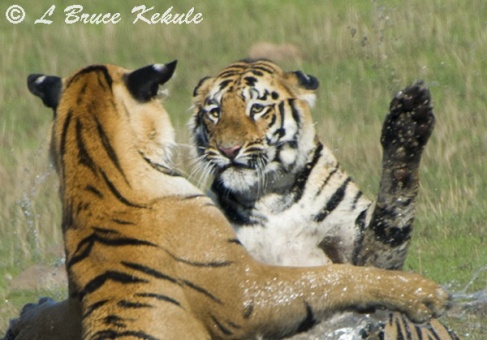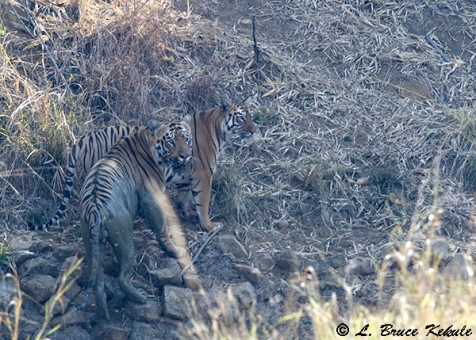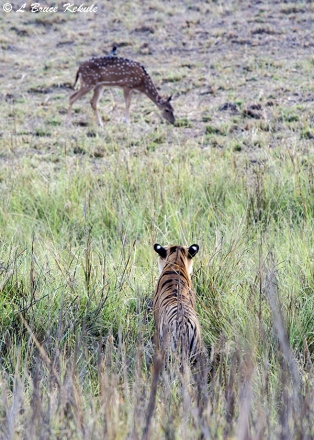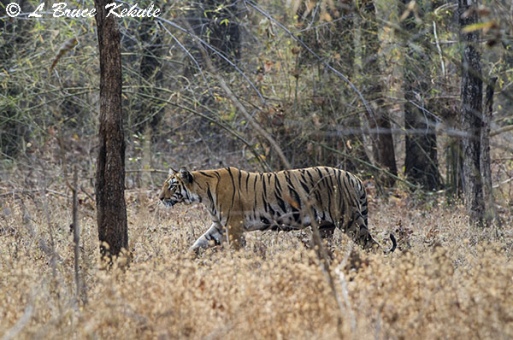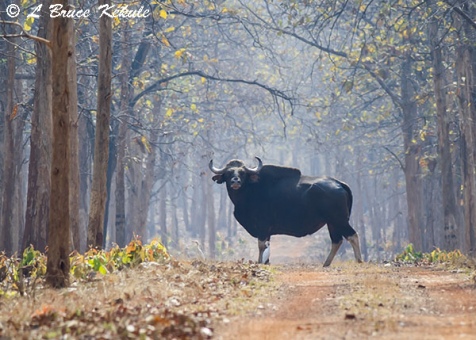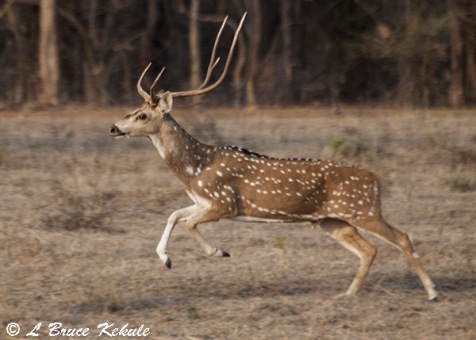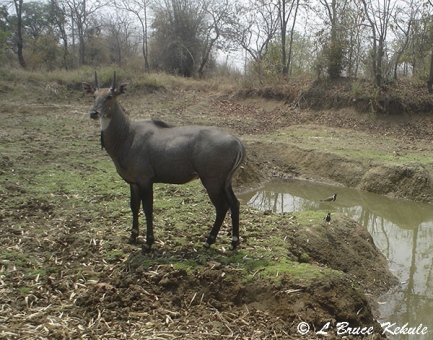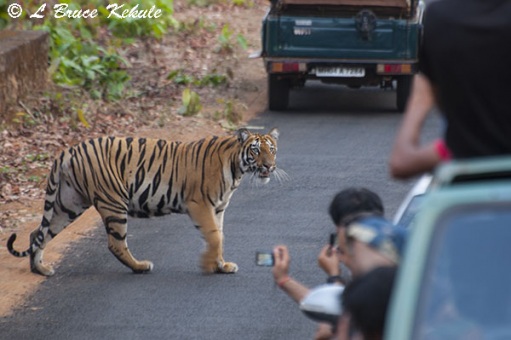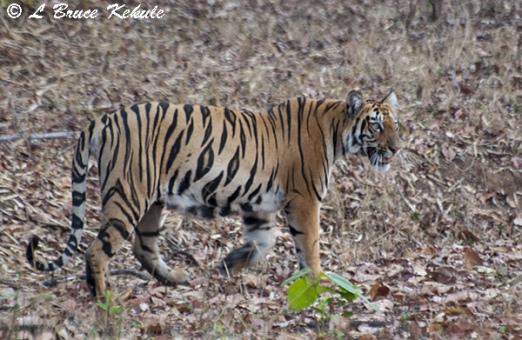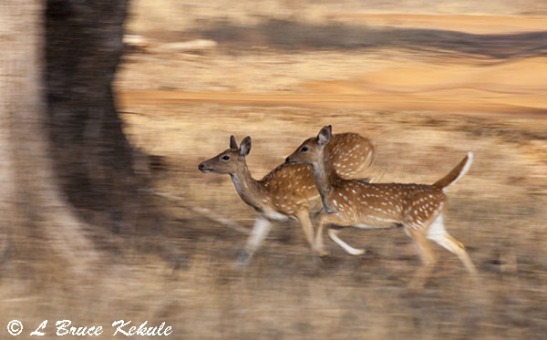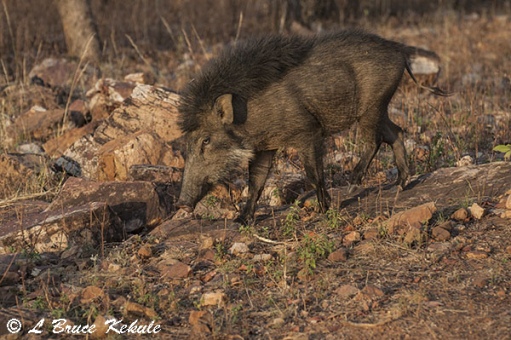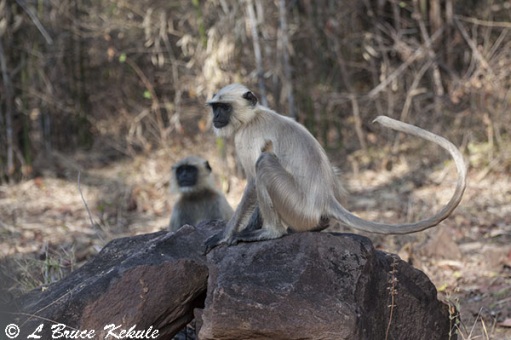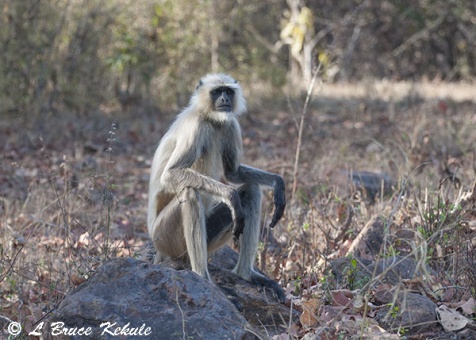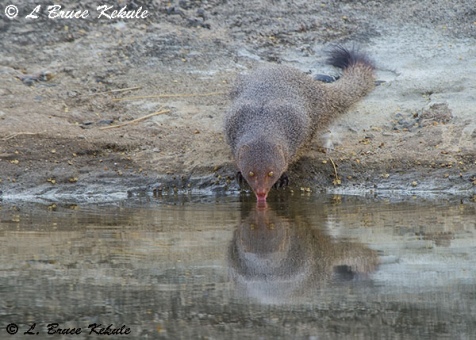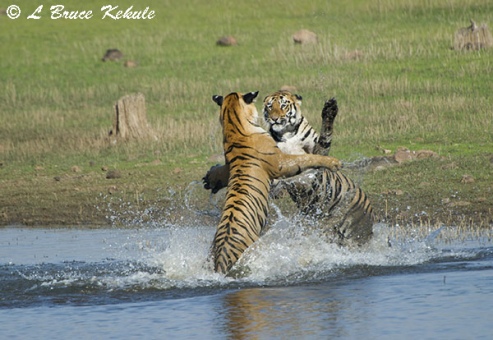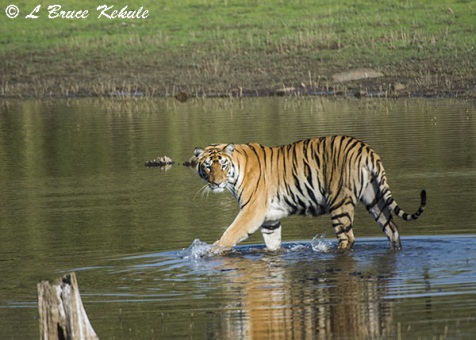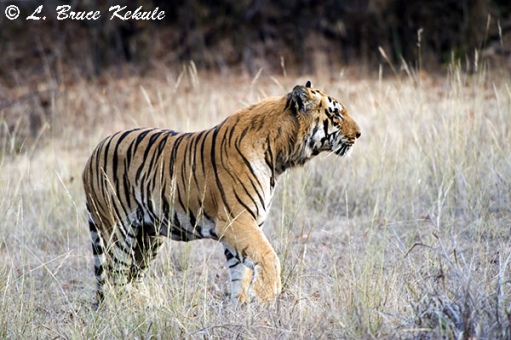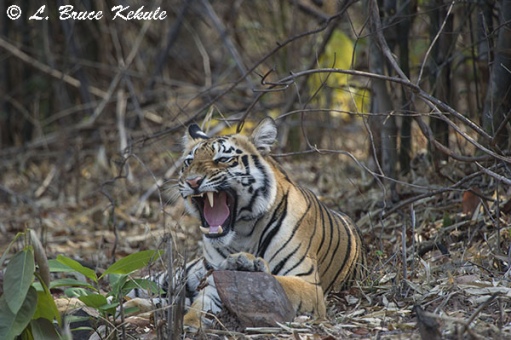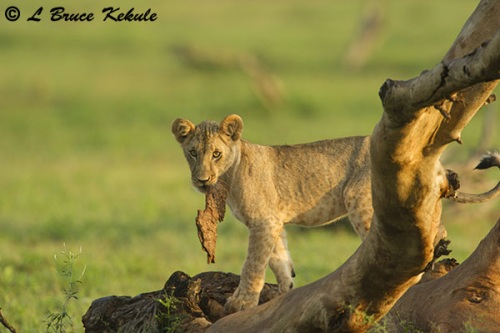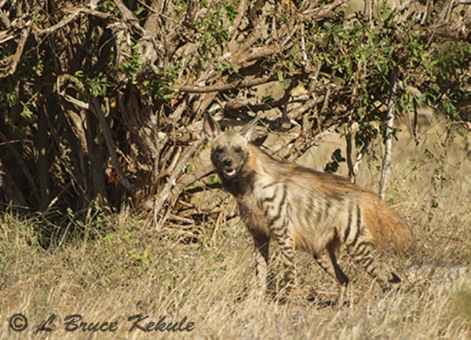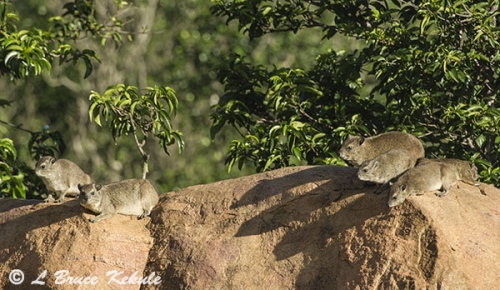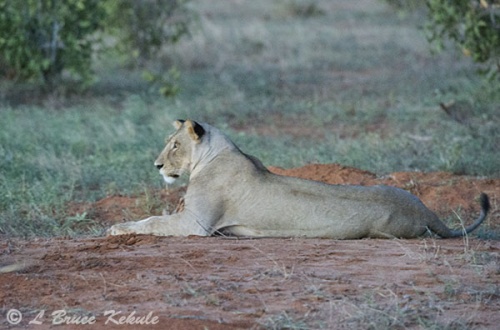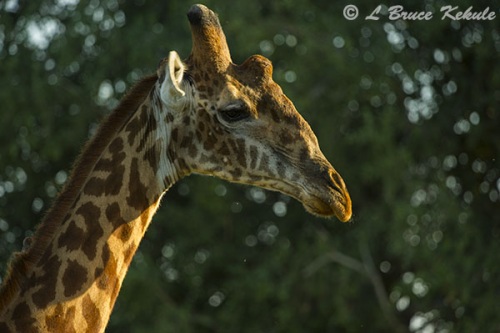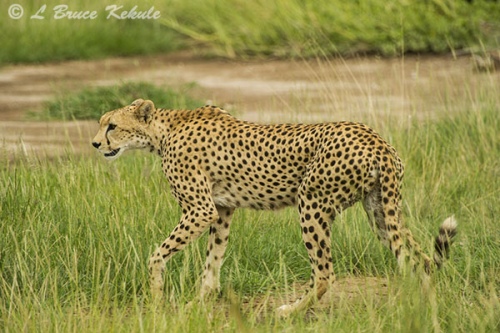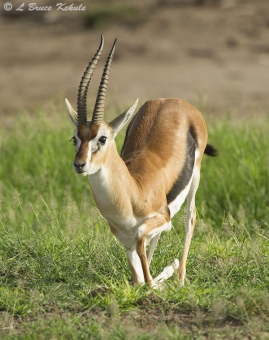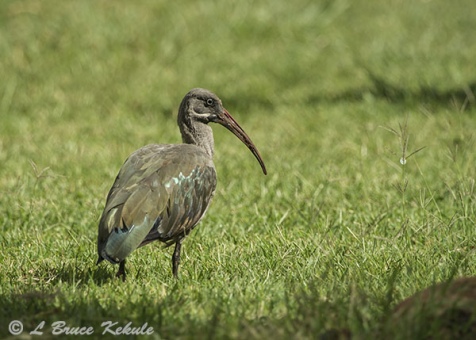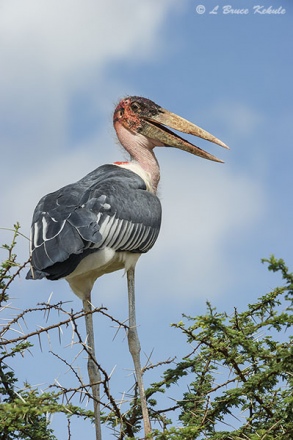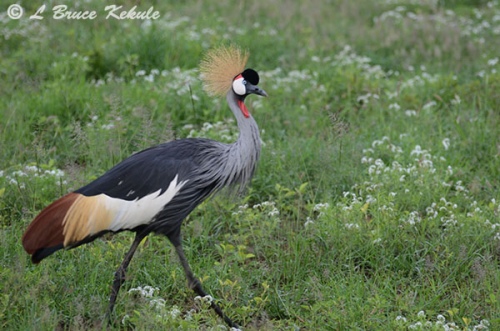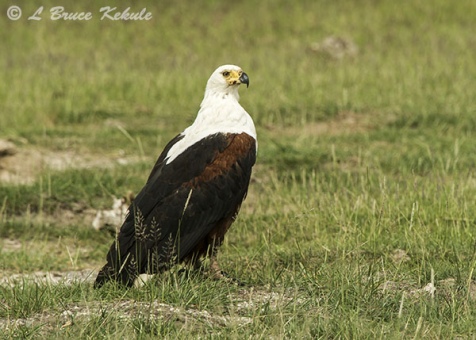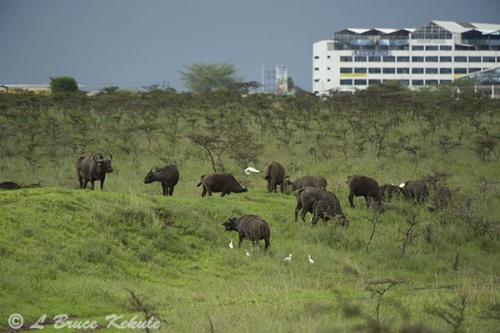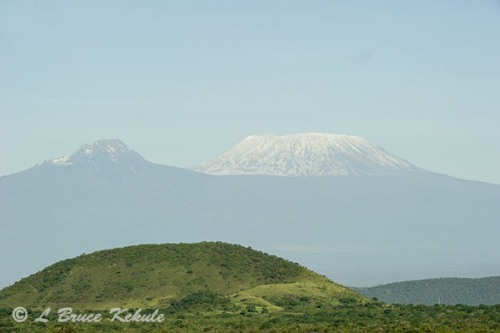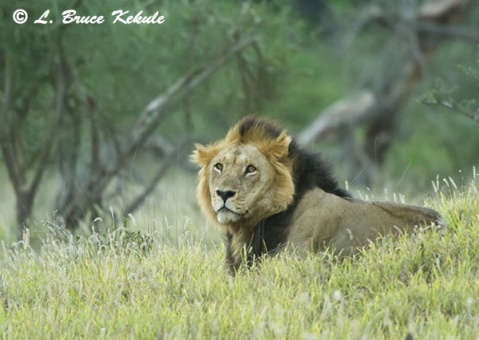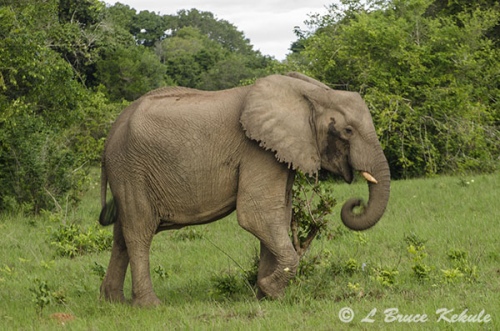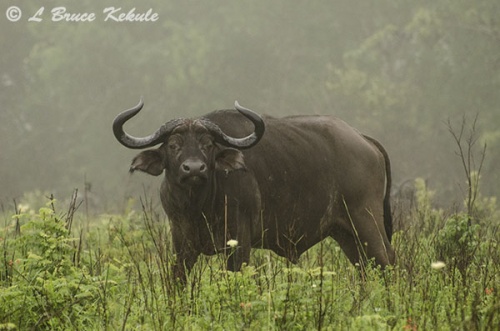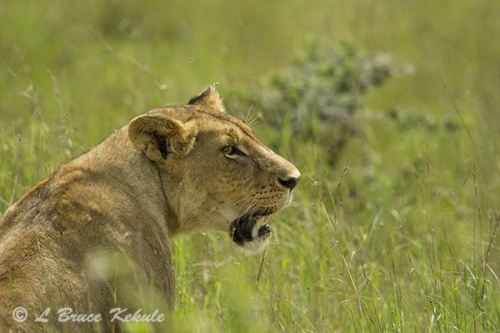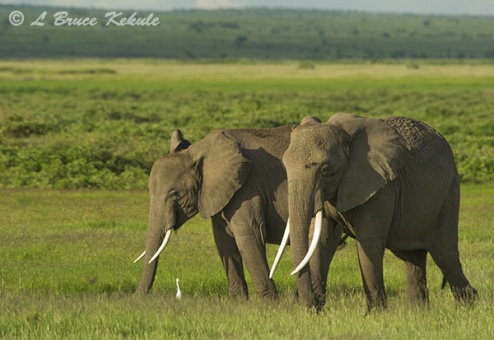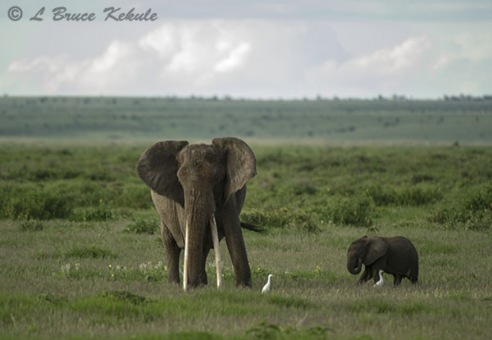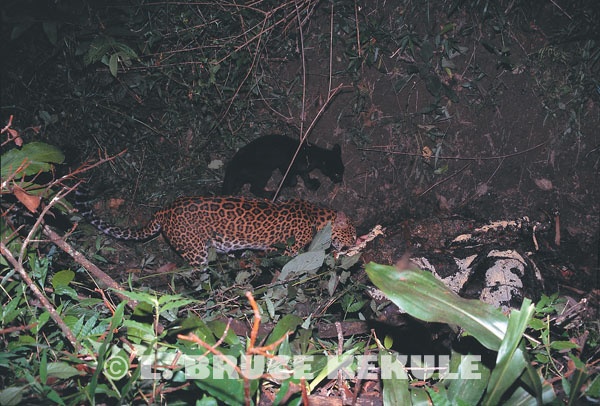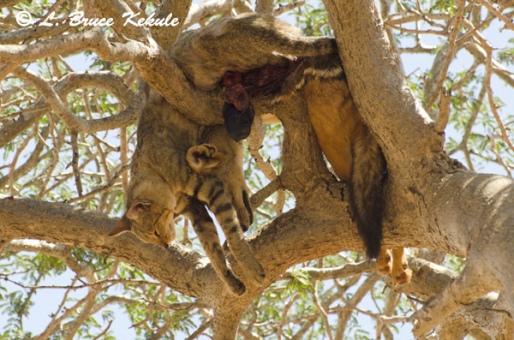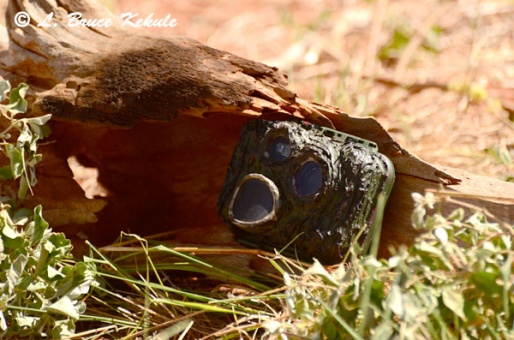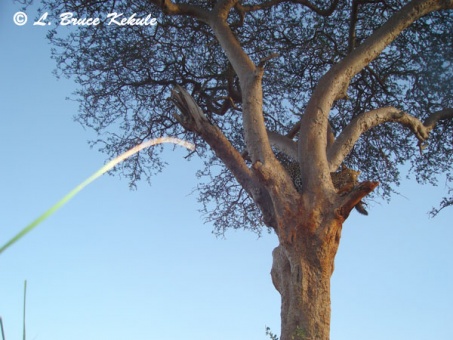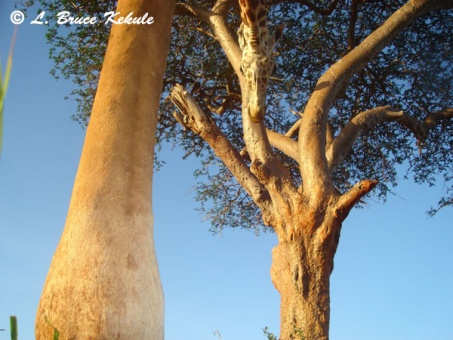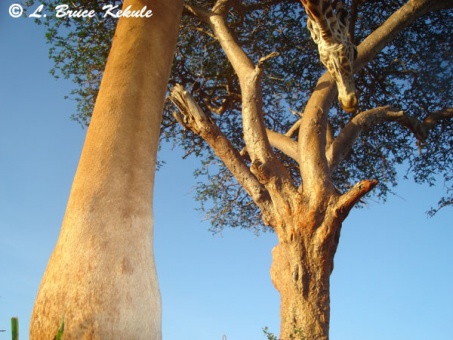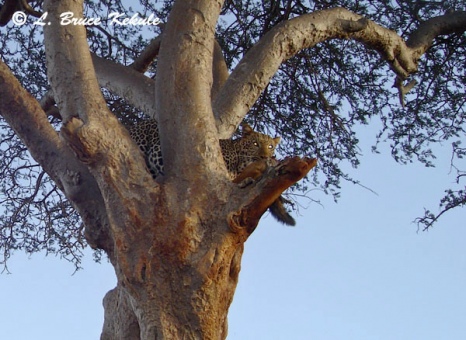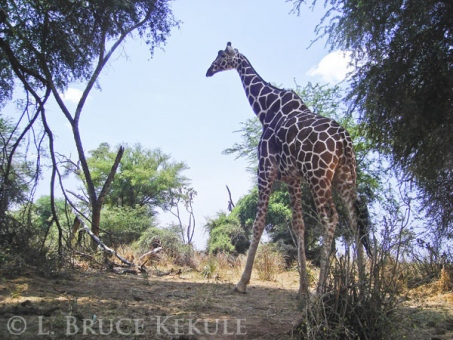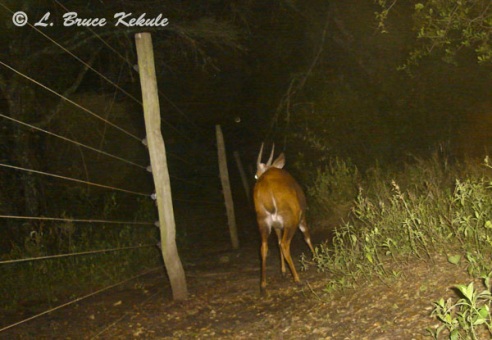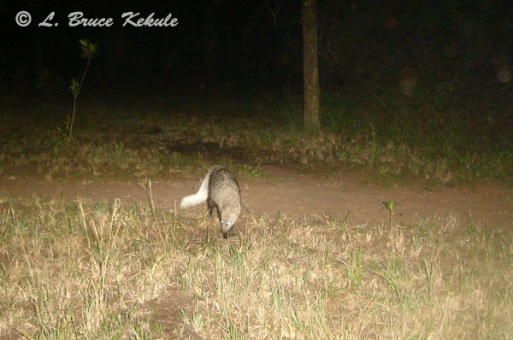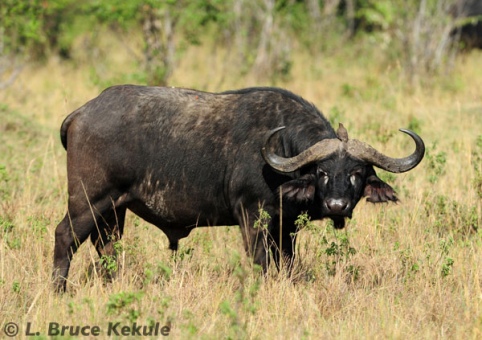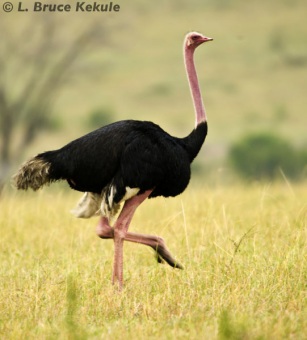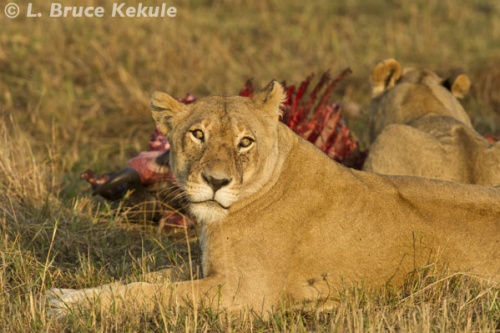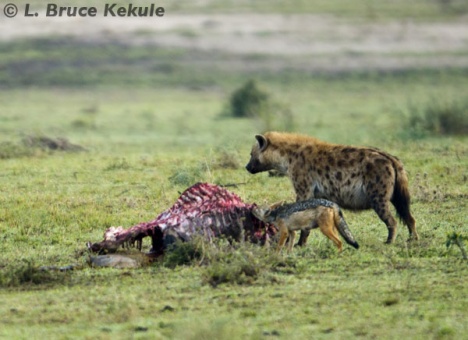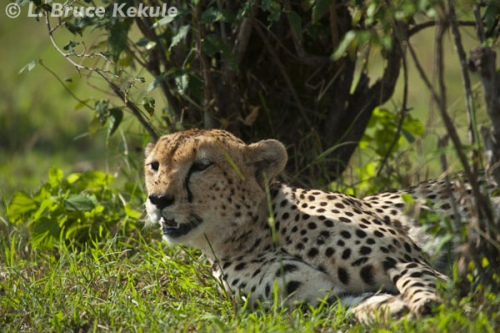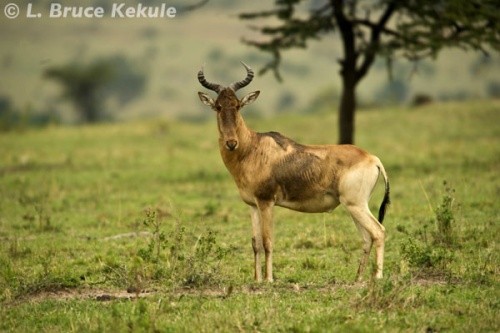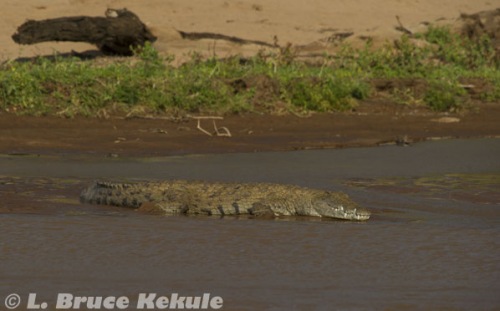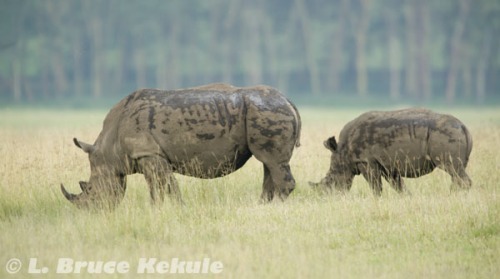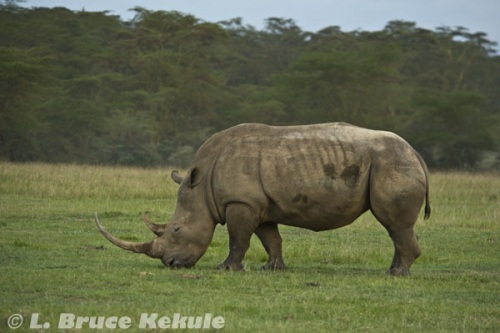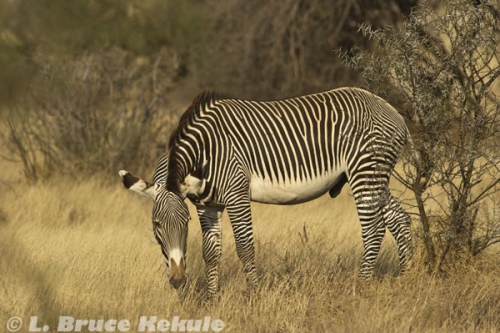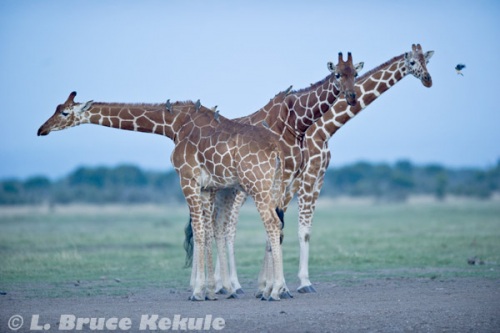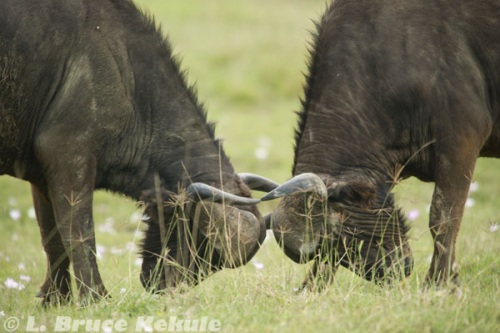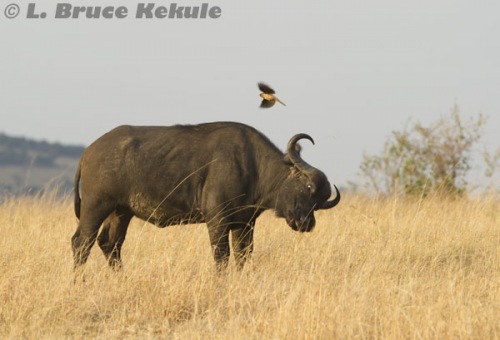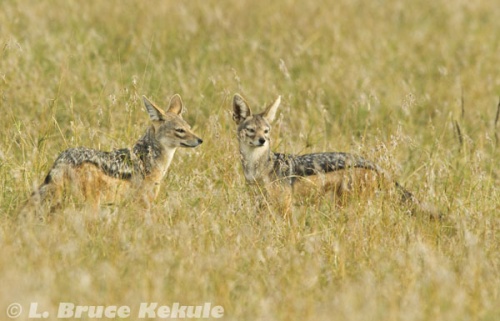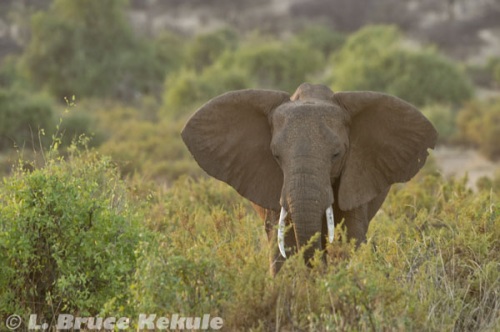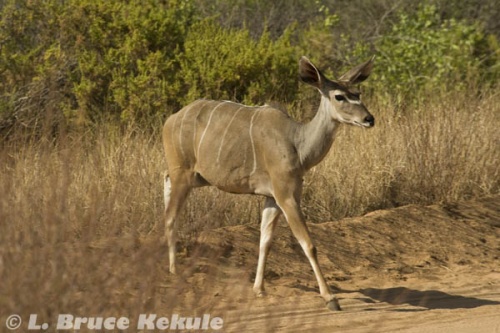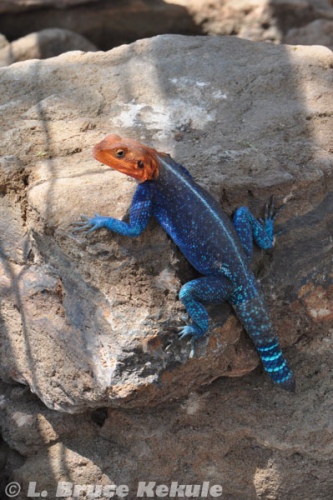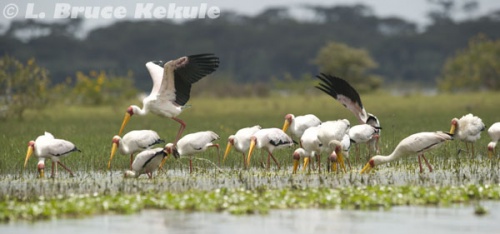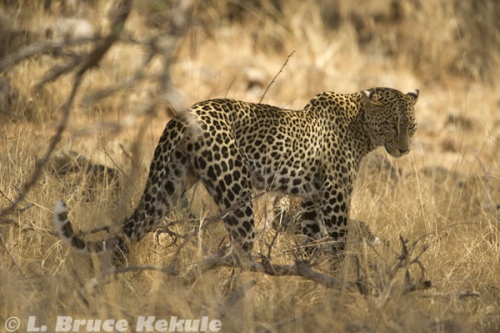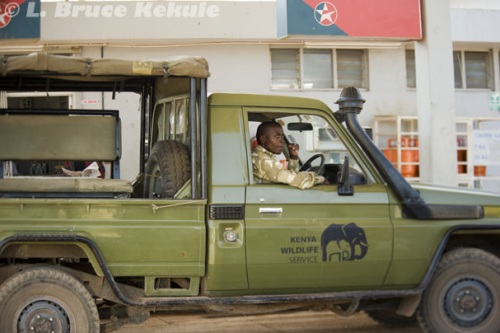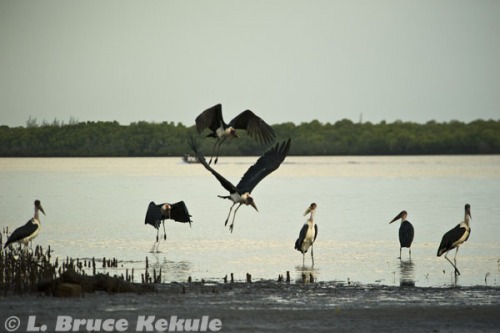Archive for the ‘Photography Abroad’ Category
Tadoba Andhari Tiger Reserve – Nine tigers in seven days
A dream come true: Central India’s top protected area for tiger sightings
Tiger sisters sparring in Tadoba Andhari
Same tigers facing off in the lake.
When the tiger evolved in southern China some two million years ago, the species radiated out, north to Siberia and west to the area around the Caspian Sea. The Himalayan mountain range prevented them from moving south into Nepal and India.
Tiger male by the road early one morning.
From China, it moved through Indochina on down the Malay Peninsula via the now submerged Sunda landbridge to Sumatra, Java and Bali in Indonesia. From there the striped cat moved west through Burma to the Indian sub-continent. The Bengal tiger is the second largest after the Siberian species.
A breeding pair in the northern section.
A century ago, there were more than 100,000 tigers throughout their range and India had about 40,000 at that time. Now, it is estimated that maybe 3,200 of these magnificent predators are left in the world with some 2,000 thriving in India and Nepal.
Tiger cub stalking a spotted deer by the lake.
The Indochinese species is just hanging on with about 250 in Thailand and another 250 in Malaysia. Sumatra has about 400 tigers. The Chinese, Caspian, Balinese and Javan tigers are all now extinct, a sad fact!
Tiger cub in the afternoon.
A internet search revealed that there is one protected area that stands above all the others for tiger sightings in India. Tadoba Andhari Tiger Reserve for some time now has been one of India’s most famous for the ease of seeing and photographing the big cat up-close and personal at times. Tadoba was declared a tiger reserve in 1933 and a National Park in 1955.
Bull gaur on the road in the buffer zone.
A buffer zone was recently added and the total area is now 1,700 sq. kilometers. Many other animals are found here including leopard, sloth bear, wild dog, gaur, sambar, chital (spotted deer), nilgai (blue bull), four-horned antelope, muntjac, mugger crocodile plus loads of smaller mammals and birds including the spectacular Indian blue peafowl and the beautiful grey jungle fowl.
Chital stag on the run being chased by wild dogs.
Overlooked by tourist until recently, this forest is situated in central India in the Maharashtra state about 700 kilometers north of Hyderabad. It is split into two parts, north and south. Only 20 percent is now open to the public, and the other 80 percent off-limits to everyone except forest officials after a Supreme Court decision last year in September. The court wanted to close all of the tiger reserves but an outcry from the people was heard and many parks now have only limited access.
Sloth bear near the lake.
Arrangements to travel like visas, air tickets and lodge bookings were arranged and I took off on Thai Airways to Hyderabad on April 4th, arriving at 1:00pm and then undertook a nine-hour taxi ride to the sanctuary. It was scary, to say the least after we got lost in rural India for a short while. The taxi driver finally got back on track and we arrived at the sanctuary at noon.
Wild dogs resting in an evergreen stream bed.
Lunch was served at the Tiger Trails Jungle Lodge situated five-minutes from the front gate of the reserve that would be my home for the next nine days. The food, lodging and service is excellent, and well worth the expense to get there. The closest city is Nagpur only two hours by road and is serviced by daily flights.
Nilgai (Blue Bull) antelope camera trapped near the Tiger Trail Jungle Lodge.
In the afternoon at 3pm, I made my first safari in a ‘Maruti’ jeep (Suzuki) with a naturalist from the lodge, a tour guide and a driver. We got a glimpse of a tiger as the sun was going down. The next day at daybreak, we went south to a lake in the interior. It was reported that four female tiger cubs, and a mother and father were sighted almost everyday in the area.
Tiger cub on the road among the tourists.
We arrived, as did many other jeeps, and we sat in the cool morning waiting for the family to arrive. At 9:30am, the first cub came out of the deep forest across from us and walked past submerging itself in the water to cool off. Then another cub arrived from the other side and they both joined up, and began sparring and facing off. I was ready with my Nikon D3s and a 200-400mm VR lens on a monopod catching the pair in mid-air as seen in the lead photo.
Tiger cub checking out a Tadoba forest official.
The next morning after only five minutes from the gate, we bumped into a male tiger 50 meters from the road out in the open grassland sleeping. Shortly thereafter, he woke up and posed for me. Then we moved to the lake and a cub walked past our jeep about three meters away. We saw tiger everyday except for Tuesday when the park is closed. I however, got a huge gaur bull in the buffer zone next to Tadoba shown here.
Tiger cub emerging after a late afternoon nap.
In the northern section, there is a breeding pair of tigers also shown in the story. They should produce a nice litter that will be an attraction for this place sometime late this year. The four cubs at the lake should disperse very soon. There are many other mature tigers and cubs throughout the sanctuary and at last count, there are about 75 individuals in the park and buffer zone.
Tadoba’s rock pantheons along the road in the tiger reserve.
Tadoba has a rich history that goes back to the 17th century. Once upon a time, dynasties of Gond Kings ruled this part of the Deccan plateau. When the kings traveled through the area, the message of his arrival would be transmitted by an engineering feat. There were rock pantheons erected every hundred yards, which had perfectly aligned tops. Over these were drawn inter-connected ropes which rung a bell at the end. The soldier just tugged on the rope and the bell would ring 50 kilometers away, signaling the approach of his majesty. Many of these rock pillars are still standing seen in the story.
Chital female posing near the road.
Like most things, my safari finally came to a close. I left the lodge at mid-day and dreaded the long taxi ride back to Hyderabad but we eventually arrived at the airport at 9pm. The driver pulled through and got me there in one piece. Then it was a bit of a hassle getting through customs and immigration as security is tight but once through, I had a chance to relax and get something to eat. I boarded the plane for the short three and half hour flight and before I knew it, was home back in Bangkok.
Chital on the run being chased by wild dogs.
India has many problems with poachers and encroachment. Two national parks, Sariska and Panna, had all their tigers poached in a short period of time. As long as there is a market for wildlife parts, the trade in these will continue to carry-on with impunity. However, the government has already reintroduced tigers to these parks but it could take a long time for them to recover fully.
Young sambar stag with tiger claw marks.
Tiger skin, bones, organs and even whiskers are sold in a million-dollar black market to Chinese, Vietnamese and Tibetan buyers. It is heartbreaking that barbaric wildlife traffickers have the audacity to trade the tiger and other animals in bits and pieces, by the gram and kilo.
A mature sambar stag with some serious battle scars.
If you want to see a tiger in the wild, head to India which offers the best opportunities to view the striped predator. There are many tiger reserves and depending on luck, one may bump into one. But Tadoba is at the top of the list for sightings. I definitely will be heading back to this amazing place and hopefully in the near future, more areas will be opened up.
A wild pib in Tadoba.
Unfortunately, Thailand could never offer this wildlife spectacle as the tiger and other Asian creatures have been persecuted for so long making these animals extremely wary which has made sightings rare. But it is still possible in places like Thap Lan and Pang Sida in the northeast, Kaeng Krachan and Kui Buri in the southwest and over in the western protected areas like Sai Yok and Erawan national parks to bump into one.
A gaur in bamboo not far from the road.
I have been working in Huai Kha Khaeng Wildlife Sanctuary for more than 15 years, Thailand greatest tiger sanctuary, and have only seen and photographed one male tiger. However, there are many tigers in this forest (about 75) as witnessed by loads of camera trap photos that have come forth from researchers and wildlife photographers. Needless to say, we need to look after this and other places that have tigers so that these magnificent creatures may continue to thrive into the foreseeable future!
Additional photos from the safari
Langur monkeys are common by the road
A langur posing close to the jeep.
Indian blue peafowl in the bamboo.
Wild boar on the run.
Indian grey mongoose drinking at a waterhole.
Indian grey jungle fowl by the road.
Grey jungle fowl in early morning.
The tigers of Tadoba
India: Land of the tiger
Two tiger cubs sparring in the lake at Tadoba.
After 10 amazing days in the sub-continent of India, I returned to Thailand with a load of tiger photographs. A few shots are some of my best work as a wildlife photographer shown here. The opportunity to see and catch this illusive carnivore presented itself. However, some parts of the trip were extremely dangerous and stressful including a nine-hour taxi ride to and from Tadoba Tiger Reserve in the State of Maharashtra some 700 kilometers north from Hyderabad. It was hectic to say the least.
Only 20% of the sanctuary is now open with 80% off-limits but it is truly India’s top protected area for tiger sightings. I saw nine tigers in seven days. It was very exciting seeing and photographing the big cat. This is just part of the selection of shots I got. It shows a truly magnificent ecosystem where predators thrive because prey species are found in abundance. I will be doing an extensive post a little bit later.
The same pair facing-off.
Tiger cub in the lake.
Tiger male walking by the lake.
Tiger female by the lake.
Tiger cub about three meters away.
Old ‘One Eye’, father of the cubs near the road.
Tiger cub posing by side of the road
Tiger cub about to yawn
Tiger cub showing its fangs
Needless to say, it was an experience now etched in memory. All shots were taken with a Nikon D3s and 200-400mm VRII lens and mono-pod except for the tiger close-up, and that was with a Nikon D90 and a 70-300mm VR lens. I was always ready from close to distant. Enjoy….!
A neelgai (blue bull), a even-toed ungulate found in most Indian protected areas. Prime tiger prey species.
The Big Five: Mega-fauna of the East African savanna
A safari to Kenya’s protected areas photographing the ‘Big Five’
Leopard mother in Samburu National Reserve
As we motored back to the lodge after my last game drive in Kenya’s Samburu National Reserve in December 2012, the feeling of disappointment began to overcome me. With no leopard in the bag, I would not get the so-called ‘Big Five’, which are the most dangerous animals on the African continent made up of elephant, rhino, buffalo, lion and leopard. Of these, it is the leopard that is the most notoriously difficult to obtain and is the secret to a successful safari.
My driver/guide Patrick Njoroge was more optimistic and said, we still had time and as if the ‘Spirits of the Wild’ were listening, a female leopard and her two cubs out in the morning sunshine, suddenly appeared by the side of the road. I immediately began shooting my Nikon medium camera, as they were very close. The action was quick and they then melted into the bush. After the dust settled, a feeling of joy took over me. My dream to get the ‘Big Five’ had come true once again.
In September 2010, I had a great opportunity to visit Kenya and on the very first day, got a leopard in a tree in the Masai Mara National Reserve that guaranteed the ‘Big Five’ was in the bag. I managed to get the other four quite easily.
Lion cub with a piece of bark in Tsavo East National Park
On my next safari in August 2011, a leopard was captured the second day, again in Masai Mara. A mother and her cub were hanging out in a dry streambed eating an antelope carcass. My driver/guide, the late George Ndungu managed to get the vehicle real close and I was able to photograph both of them. The elephant, buffalo, lion and finally the rhino were also collected.
On my third trip in May 2012 to southern Kenya while me and Patrick were out on game drive, he spotted a leopard kill (wild cat and jackal) in a tree by the side of the road. This was amazing in itself, and I decided to set a camera trap in a hollow log on the ground facing up at the kill. The next morning, I netted a single photo of the leopard with the jackal in its mouth. This was in Tsavo East National Park and that was a spooky capture.!
Getting the ‘Big Five’ a forth time in a row this last December was for me a complete stroke of luck. Many photographers and nature lovers who visit the ‘Dark Continent’ strive for the complete group but go home feeling empty-handed without the spotted cat. But then again, others bump into the ‘ghost’ easily. It is all about luck and I feel fortunate to have some, I guess.
Elephant bull in Tsavo West National Park
The term the ‘Big Five’ was coined by colonial hunters in East Africa sometime in the 1850s, and was the trophies collected of the large dangerous mammals all taken with a gun. Photography was in its infant stage and very few photographs of wild animals in the natural habitat were available from the era other than pictures of downed animals with the trophy hunter and gun bearers by its side.
Going on safari was big business just after the beginning of the 20th century, and usually only the well off could afford such a journey. It actually was quite fashionable to visit Africa and bag the ‘Big Five’. They then took the trophies home to show them off to other like-minded hunters.
The safari business was thriving and when many famous people like Theodore Roosevelt and later Hollywood movies stars like Clark Gable, Ava Gardner, Grace Kelly and Stewart Granger really made the business jump.
Cape buffalo bull in Amboseli National Park
But remember, Roosevelt as President helped establish an additional five national parks to the list that already included Yellowstone, Yosemite, Sequoia, General Grant, and Mount Rainier national parks. He doubled the number of national parks to 10 and helped numerous other protected lands get established.
One of the first countries to ban hunting in Africa was Kenya in 1977 whose people and government saw the need and meaning of saving wildlife for generations to come, and as a source of income for the country. Other countries like Tanzania followed suit and now one can go on a photography/viewing safari and see most of the animals that dot the savanna.
Protected areas were quickly designated and the business of safari continued, but because many animals have now come back from the brink of extinction, the efforts of the government has paid-off. Kenya and Tanzania are commended for taking the first brave steps in protecting the environment and its wildlife for the world to see and cherish.
Black rhino female in Nairobi National Park
I am of course addicted to Africa, especially Kenya. They say once you get the bug, it’s hard to stay away. I am planning another safari with my family sometime this year once again with Trans World Safaris in Nairobi. They have proven to be the best safari company for my needs. Their organization, planning and staff are superb.
In the event you take a vacation, I recommend a safari to Kenya. The chances are good that you will see many creatures of nature including the ‘Big Five’. Reasonable costs can be had with a little shopping on the Internet. The choices are broad and a ‘once in a lifetime’ trip is there for the taking. Enjoy!
African wildlife in Southern Kenya
African Safari in May 2012 – Part Two
Africa is not just about the ‘Big Five’. It’s also about all the other amazing creatures and ecosystems that make up the tremendous biodiversity of flora and fauna found here.
Bull elephant just after a rain in Amboseli National Park
It can be said that Kenya is one of the most diverse and best-protected wildlife habitats anywhere in the world where tourists and photographers alike can consistently see and photograph wild animals up-close for the most part.
Striped hyena in Tsavo (East) National Park
However, some of Kenya’s wildlife is not that easy to spot like the rare striped hyena or sable antelope, while others are downright easy such as elephants and buffalo for example.
Sable antelope male in the mist at Shimba Hills Wildlife Sanctuary
Some species have become so habituated to safari vehicles and its occupants, especially lion and cheetah. Most times the big cats simply ignore you. But not all these animals are that tame like the elusive leopard, or even antelope like eland.
Eland bull in Nairobi National Park
Some creatures flee at the first sight of a vehicle and man (years and years of poaching pressure) knowing very well that retreat is the only safe course of action, and humans are not to be trusted.
Bat-eared fox near dusk in Amboseli
Hence, it is not always that easy as some might surmise. It’s about luck too. Some days are stellar while others are just mediocre. But for the most part, it is a photographers dream come true..!
Rock hyrax in Tsavo (West) National Park
While on safari, I shoot everything I see (through the lens of course) until I’m satisfied I have the shot, or the animal has left the scene.
Rock hyrax family in Tsavo
Over the past three years, I have made three trips to the ‘Dark Continent’ and you could say I’m addicted to the place. This trip I visited Amboseli and Tsavo national parks near Mount Kilomanjaro, Taita Wildlife Sanctuary nearby and Shimba Hills Wildlife Sanctuary near the southern coastal city of Mombassa plus Nairobi National Park over two weeks.
Lioness during late afternoon in Tsavo (East) National Park
I traveled some 3,00o kilometers with my good friend and guide/driver, Patrick Mjoroge, a Kenya national. With more than 25 years of experience, he has been an important asset in my photographic quest.
Lioness on the run after prey in Tsavo
Transworldsafaris.com in Nairobi have also been very helpful in setting up my trips. They are truly one of Kenya’s best safari companies and I recommend them to anyone interested in going.
Another giraffe male in Tsavo (East)
I now have accumulated quite a lot of photographs for an up-coming book project about wildlife in Asia and Africa showing a comparison between the two continents.
Giraffe during late afrternoon in Shimba Hills
At the end of the day, the game of wildlife photography is all about how lucky you are. What is around the next bush or bend in the road is the big question?
Zebra taking it easy in Amboseli
I have been very fortunate to visit Kenya but consistency, good photographic technique and equipment plus determination is the real secret to successful wildlife photography, whether it’s in Africa, Asia or the U.S. for that matter.
Thompson’s gazelle in Nairobi
Shortly (December 5th), I leave for Kenya once more (3-week trip) and hope I can close out a few more species still not in the bag like kudu and wild dog that have been very elusive.
Hippo mother and calf in Amboseli
It is hoped all will take pleasure in this photo essay as much as I have writing and photographing it. Enjoy…!
Additional photos while on safari in May:
Nile crocodile in Tsavo (West)
Cheetah on the prowl in Amboseli
Cheetah family in Amboseli
Cheetah on the run in Amboseli
Red hartebeest in Taita Wildlife Sanctuary
Thompson’s gazelle in Amboseli
Black-headed heron in Amboseli
Sacred ibis in Nairobi
Bateleur pair in Tsavo (East)
Glossy ibis in Tsavo (West)
Ostrich in Nairobi
Marabou stork in Tsavo (West)
Grey-headed crane in Amboseli
African fish eagle in Amboseli
Ground hornbills in Tsavo (West)
Sable male in Shimba Hills
Sable female and calf in Shimbe Hills
Cape buffalo in Nairobi National Park
Africa’s Big Five: Three times lucky…..!
In 2010 and 2011, I was extremely lucky to visit Kenya in East Africa to photograph the ‘Big Five’ including elephant, white rhino, buffalo, lion and leopard plus many other species in several protected areas including the Masai Mara, Lake Nakuru and Samburu national reserves plus Sweetwaters private reserve in the west and central areas of Kenya.
Mt. Kilomanjaro seen from Amboseli National Park.
This year in May, it was decided with the safari company to go south this time to some new but very famous protected areas including Amboseli and Tsavo (West and East) national parks near Mount Kilomanjaro on the border with Tanzania. I also visited Shimba Hills and Taita wildlife sanctuaries and finally Nairobi National Park near the city of Nairobi.
Mt. Kilomanjaro seen from Tsavo (West) National Park.
The highlight of this trip was catching a black-mane lion in the grasslands of Taita Wildlife Sanctuary on my way back to Nairobi near the end of my trip. A very luck encounter and a dream come true….!
Black-mane lion in Taita close to dusk.
Lazy lion yawning and showing his canines.
Then I was also extremely lucky to catch an elusive black rhino mother and her calf in Nairobi National Park on the last day of the safari. They were reintroduced from South Africa. These massive beasts are tough to see let alone photograph…!
Black rhino mother and calf down in a gully.
Another shot of the pair higher up on the ridge.
In most of the parks in Kenya, elephant and buffalo are common and easy to see and photograph. However, in Tsavo National Park, the world’s largest protected area, both species are red from the earthen clay found here and they stand-out. I spent six days in both sections of Tsavo and it was an amazing adventure.
A bull elephant in Tsavo (West) National Park.
Another red bull in Tsavo (East) National Park.
A Cape buffalo bull in Tsavo (East).
Then, I headed further south to the mist shrouded jungles of Shimba Hills near the southern port city of Mombassa on the coast. Here elephant are gray and buffalo are black as normal with other parts of Kenya.
Young elephant in Shimba Hills. This bull is in musth, a state where male elephants can be very aggressive. Note fluid draining from the temporal gland.
A Cape buffalo bull with an unusual set of horns in mist shrouded Shimba Hills.
Over the course of two weeks, I traveled more than 3,000 kilometers with my good companion, driver and guide Patrick Mjoroge, a Kenyan national with a good heart and loads of experience (more than 25 years) to help me get the best possible opportunities for photographing wildlife. He is an ‘eagle eye’ and saw the wild cat and jackal hanging in a leopard’s tree in Tsavo (East).
Leopard’s prey: A wild cat and a black-backed jackal.
My leopard camera trapped eating the jackal in Tsavo (East).
This was simply an amazing feat which allowed me to camera trap the leopard previously published under ‘A needle in the haystack’ and to make-up the ‘Big Five’ once again. Three times lucky I guess.
Me and Patrick in Taita Wildlife Sanctuary.
I’m now in the process of planning a forth visit to Kenya in early December. It will be another two-week trip down south hopefully to catch some more species that I still do not have like kudu and wild dogs. I’m working on a forth book about wildlife in Asia and Africa as a comparison, and hope to be finished sometime next year. That’s the plan anyway..!
Hope ya’ all will enjoy this post. Another post to follow on all the other species I collected in the two-week period.
Additional photos of the ‘Big Five’:
Lone lioness found in the savannah during mid-day in Nairobi National Park.
Elephants in Amboseli National Park.
Cape buffalo in Amboseli.
Mother elephant and baby in Amboseli. These are the longest tusks I have ever seen on an African elephant. This place is well protected with a mandate of ‘shoot to kill’ any poachers.
Leopards camera trapped on a kill in Huai Kha Khaeng Wildlife Sanctuary
Leopards at a sambar kill in Huai Kha Khaeng Wildlife Sanctuary, western Thailand. This rare camera trap photo was a complete surprise to see a yellow phase mother leopard and a young black cub. There are many black leopards in this protected area and it is a tribute to its status as a World Heritage Site.
African leopard camera trapped in Tsavo East NP, Kenya
‘A Needle in a Haystack’: A Sony S600 catches a leopard eating prey
Sometimes, things happen that are unexplainable and spooky. That goes for the following story. I have just returned from Africa and while on safari, was able to slip two camera traps in the bush (a Sony S600 and W7) at several locations. But the weirdest setup was in Tsavo East National Park in Southern Kenya not far from the infamous ‘Man-eaters of Tsavo’ site.
To get a perspective of how huge this place really is (Tsavo – East and West) is the largest national park in the world at more than 43,000 square kilometers (the size of Wales, Israel and New Jersey). Finding a leopard is like finding the proverbial ‘needle in a haystack’.
Leopard’s prey: A wild cat and a black-backed jackal
One morning as my companion, driver and guide Patrick Mjoroge and I were out on a game drive (as they are known), he spotted two leopard kills hanging in a tree by the side of the road. We stopped and saw a wild cat wedged on top of a jackal in the branches, and both ‘dead as door nails’.
Sony S600/1010/SSII camera trap on the ground at the leopard tree
The big cat for a later meal stashed these two small predators and so we waited for a while but in vain. Then it dawned on me: why not just throw my S600/SSII/1010 on the ground in a hollow piece of dead wood pointed up at the big tree. It was worth a shot! Later that day, we drove by several times but the leopard was no-where to be seen.
A full-size image of the African leopard in a tree eating its prey
The carrion was still there so I decided to let it soak overnight until the next morning thinking the carnivore might come at night to eat its prize. I took a few shots of the hanging dead and the set-up, and we departed quickly not wanting to hang around obviously. The leopard on the ground is extremely fast and I was not sure how close it might be waiting, and we might just turn into dinner.
Bright and early the next morning, we drove directly to the tree and found the two kills gone. A small tree branch had fallen right in front of the cam and I thought I had missed the cat for sure. As I scanned through the images, I could see nothing but a large leg in several frames. A giraffe had almost stepped on the cam before we arrived and I could see its head up close to where the kills had been. I was a bit disappointed.
Giraffe at the leopard’s tree
Then, I decided to scroll through again and noticed one frame was darker just before the giraffe shots. I zoomed in and almost jumped out of the truck. Low and behold, I saw spots in the crotch of the tree and then saw the leopard’s head looking down towards the cam with the jackal in its mouth. The big cat had visited late in the afternoon and the background sky was nice and blue. I was speechless for a few moments until I could talk again.
Giraffe very close to the S600
I began jumping up and down in the back until Patrick told me to calm down. I showed him the shot and we both began celebrating this remarkable camera trap event. It definitely was worth several rounds of drinks or ‘sundowners’ as they are known in Africa later at the bar in the tented-camp.
Leopard close-up eating the jackal
Weird is an under-statement and the ‘spirits of the wild’ had answered my wishes. I have cropped and enhanced the leopard shot so it can be seen quite clearly. Remarkable is all I can say and the little S600 did a herculean job of catching a ghost!
More set-ups to follow: The S600 also traps hyena, baboon, impala, waterbuck, and the W7 catches elephant plus a bushbaby in a hotel bar getting the largest and one of the smallest mammals found in Africa. It was an amazing trip to the ‘Dark Continent’ as it was known in the old days, and hope everyone enjoys these camera trap photographs.
Camera trapping in Africa
Capturing wildlife by camera trap while out on photographic safari
Reticulated giraffe in Samburu National Reserve: A lucky capture..!
In September 2010, I went on a photographic safari to Kenya’s protected areas including the Masai Mara National Reserve during the annual wildlife crossings at the Mara River, and then on to Lake Nakuru National Park and Samburu National Reserve. It was difficult to set trail cameras as the laws are very strict about leaving the vehicle while out on safari.
Finally, on the next to the last day, I got a quick chance to slip a camera in the bush off a dirt track by the river in Samburu. After three hours, my guide and driver said we had to retrieve the cam. Low and behold, a giraffe had passed the Sony P43/Bigfoot/1040/’C’ externals. It was a fluke and the shot shown here was the best of two. The lowdown set really enhances this very tall even-toed ungulate.
A rare male bushbuck during late afternoon in Siana Springs Tented Camp near the Masai Mara National Reserve
Then in August 2011, I was back in Kenya for another 12-day trip and the first three days was spent at Siana Springs Tented Camp next to the great Masai Mara reserve. The amazing thing about this place was the bushbuck, a very rare antelope, is found on the grounds. I asked for permission and set out three traps. After a couple of nights, a Sony S600/1020/SS1 trapped a ‘male bushbuck’, an African mongoose and a large-spotted genet. On another cam, I got a female bushbuck.
Male bushbuck camera trapped at night on the grounds of Siana Springs
On my older P43/Bigfoot/1040 with ‘C’ cell externals, I trapped a night patrol ranger as he passed by showing his boots, long coat and rifle….amazingly, it is a pre-64 Winchester Model 70 Supergrade in .458 Magnum ‘African’ model with express sights and a beautiful select walnut stock. What a rifle to have out on night patrol?
Night patrol ranger with a .458 Winchester M70 ‘African’ model. A rare firearm left over from the old days of hunting safaris
Some rich American hunter left this rifle with the old boy who was previously a tracker and guide for safari hunters in days gone by. I use to be a gunsmith and built many rifles from old shot-out Model 70s and Mauser 98s. I felt a bit of nostalgia, as this was my favorite caliber and I used a .458 Model 70 when I hunted with a gun here in Thailand but that was 25 years ago, and is another story. I’m still a hunter at heart, just switched from Winchester to Nikon, Minolta, Canon and Sony.
Female bushbuck along a trail on the grounds at Siana Springs
I’m off to Kenya once again on May 1st armed with my big Nikon D3s and a new Nikon 200-400 VR II telephoto lens. I will also be taking three camera traps and hopefully I will be able to set a few cams here and there as I know some tented camps usually have wildlife running around the grounds…plus the guards…..hmmmm!
White-tailed mongoose, a common carnivore
Large-spotted genet, another common predator
These three cams are the ones I’m taking with me to Kenya. The two in the back are Sony W7s in Pelican 1010 cases with Snapshotsniper SS1 control boards, and one in front is a Sony S600 in a Pelican 1010 with a SS1 control board. These cams are small and light, and easily packed in my luggage. I hope I can set them up…..that is the big question??
Camera traps ready for Africa
Africa Revisited: Photographic safari to Kenya – 2011
Photographing Africa’s ‘Big Five’ and other amazing creatures of nature in Kenya’s Siana Springs Conservancy, Masai Mara National Reserve and Nairobi National Park
‘In memory of George Ndungu, my driver and guide who passed
away from malaria shortly after this safari’
It is said: “a visit to Africa sometimes becomes an addiction”. I got snagged on my very first trip in 2010! Kenya’s remarkable wildlife and natural ecosystems are unforgettable and hence, one can become hooked. I now have the so-called ‘African bug’. On my first safari to Kenya’s vast protected areas, it was an exciting event for me and a dream come true. I decided then that I would return at least once a year to photograph what is undeniably one of the top wildlife photography places on the planet.
Leopard cub in dry streambed (donga) in the Masai Mara National Reserve
During the early part of 2011, I arranged a safari with the same company used in 2010. They are Transworld Safaris Kenya based in Nairobi. Sati Lota, the Tours Manager, was very helpful in planning the trip scheduled for mid-August. A group of five Thai photographers would join me on this trip. All the required fees, air tickets, visa to Kenya and other essentials were taken care of three months before departure to the Dark Continent.
Mother leopard yawning in the shade in the Masai Mara
When August 16th finally rolled around, the team and I met at Suvarnabhumi Airport and boarded Kenya Airways just after noon. The flight was eight and half hours long and we arrived around 7pm. We quickly zipped through immigration and customs and were met by Patrick Njoroge and George Ndungu, the two drivers used from 2010. They had proven to be expert tour guides and Sati was kind enough to arrange for them plus two 4X4 Toyota Land Cruisers for our safari. After getting stuck several times in a van last year on wet greasy roads, I insisted on four-wheeled vehicles this time around. It proved to be the right choice as it did rain quite a few times making the roads tough in places.
African elephant in the Masai Mara
We were whisked away to the Ole Sereni Hotel not far from the airport and put up for the night. It is absolutely dangerous to drive around Kenya’s back roads during darkness so we rested up for the long 6-hour drive the next morning to the Masai Mara National Reserve in the Southwest near the border with Tanzania.
African Cape buffalo in the Masai Mara
The next morning after breakfast, we were on our way out of hectic Nairobi and stopped at a supermarket to buy foodstuffs and some green peas to fill our beanbags. This is very important for a steady support while photographing wildlife from the Land Cruisers’ windows and open top. After that, it was on the road again up to the rim of the Great Rift Valley and down to the massive valley floor. The main town is Narok and it is a trucker’s waystop, and a very busy place.
White rhino in Nairobi National Park
Off again and as we got nearer to the Masai Mara, the dirt track became rough. The skies were cloudy and the temperature was pleasant but the dusty pot-holed road began to wear us down quickly. We stopped at a trinket shop that gave us some relief to stretch and relax. After a quick cup of coffee, we were on the road again. As we got closer, a herd of zebra jumped across the front of the truck and I quickly pulled out my medium camera and fired off a few shots. As the light was harsh, it was just a practice run getting warmed up for the safari, and testing my new Nikon D7000 camera and 70-300mm VR lens that also has great video capability. I wanted to record motion and behavior this time around to be used in wildlife presentations I do from time to time.
Old male lion in the Masai Mara
We finally arrived at our first hotel, the Siana Springs Tented Camp in the Siana Springs Conservancy, a protected area next to the Masai Mara. This place was pleasant and the rare African bushbuck thrives here coming out on the hotel grounds to munch the fresh grass. Lunch was being served so we ate and then moved into our tents that were very comfortable. That afternoon, everyone jumped into the land cruisers and we were off for our first game drive. Later that night we had a wonderful dinner as the temperature dropped to about 12 degrees Centigrade, and we all slept like logs after the long haul from Nairobi. It was absolutely marvelous and we were impressed with the food, professional service and management run by Richard Siele, a Kenyan national.
African bushbuck in Siana Springs Hotel grounds
As we moved into the park, gazelles and zebras were grazing on the lush grass with an ostrich here and there. Close to the end of the day, we bumped into a herd of Kenyan giraffes (also know as the Masai giraffe) in beautiful afternoon light. I now have three species of giraffe including the reticulated and the rare Rothschild giraffes photographed the previous year. We also managed to catch some black-back jackals out hunting for prey. It was a great start and we all agreed to do another game drive the following morning.
Thompson’s gazelle in Siana Springs Conservancy
At 6.30am after breakfast, we were off into the conservancy once again hoping to bump into lion or leopard but they remained elusive. After an hour of driving around, we found a large group of baboons out hunting in the crisp morning light. And then a male solitary giraffe was nibbling the treetops as the sun peaked over the hills. I got some amazing photos and video. Shortly after that, a small family group of elephants was spotted so we moved in closer. The huge gray beasts paid no attention to our vehicles. The beauty of this place; there were no other safari companies doing game drives here. We had the whole place to ourselves unlike what we were about to see the next few days in the Masai Mara.
Ostrich in Siana Springs
We left Siana Springs for a hotel near the main gate of the Masai Mara National Reserve. It was decided to go straight into the park for a quick look. After several kilometers, we saw a group of safari vans parked in a semi-circle around a tree so down we went. Three cheetahs (a mother and two cubs) were sleeping at the base of the tree. I was able to get some frame filling shots of the three-some. After some time, the group decided to check-in to the Sentrim Mara Tented Camp, which was very much different from our previous accommodations. The surrounding area was dry like a desert unlike Siana Springs which was green and crisp.
Masai giraffe also known as Kenyan giraffe in Siana Springs
Over the next five days, our daily excursions into the reserve where we met with some terrific African wildlife scenes. We saw lion, cheetah, hyena and a jackal on several kills, a few solitary male lions, buffalo, herds of elephant, the shy Eland (the largest of the African antelope) plus baboon, ground hornbill, vulture, secretary bird and of course the massive herds of wildebeest, zebra and antelope.
Cheethas on a kill in the Masai Mara
Our departure date came and we left the reserve, but this time with a bit of disappointment. At one cheetah kill, there were almost 50 vehicles on the road all locked-in a traffic jam. Most operators now have short-wave radio and keep in touch with each other. When something of great interest like lion, leopard or cheetah is seen, the vans and 4X4s’ coming rushing to get a glimpse of the spectacle as sightings are normally short. It has now become quite hectic in many places, especially the immense river crossings on the Mara River during August-September, the peak season.
Lions on a kill in the Masai Mara
Our next stop was back in the capital where we entered Nairobi National Park for a half-day safari. This park is right next to the airport and our hotel, and has some interesting creatures including lion, leopard, black and white rhino, plus many other classic African animals except the elephant. We got white rhino just inside the gate to make-up the ‘Big Five’ for all of us. We also got an old lazy male lion in the shade, and some African spoonbills, some of Africa’s rarest birds. The park provided a great time and loads of photographic images at the tail-end of the safari.
Hyena and jackal on a kill in the Masai Mara
At the end of the day, we headed back to the hotel. The next day we did a little shopping and then boarded the flight home to Thailand in the evening. Looking back, it was once again a great opportunity to observe and record Kenya’s superb wildlife and habitats.
Cheetha resting on the Masai Mara plain
I have already made arrangements to do another safari next year but at new locations in southern Kenya, which will include the famous Amboseli, Tsavo and Simba Hills national parks not far from the iconic Mount Kilimanjaro, Africa’s highest mountain. I will spend about two weeks chasing after Kenya’s impressive wildlife and truly look forward to this adventure. I now have the African bug!
Safari group from Thailand in August 2011 on the Masai Mara
*************************************************************************************
Additional photos from the 2011 Safari
Red Hartebeest in the Masai Mara
Lion female stretching in the Masai Mara
Playful lion cub in the Masai Mara
Elan bull in the Masai Mara
Zebras in the Masai Mara
African spoonbills in Nairobi National Park
Little bee-eater in Nairobi National Park
African lilac roller in the Masai Mara
The ‘Big Five’ in five days – Part Three
Additional photographs acquired on my first African Safari in 2010
Mother lion and cubs in Sweetwaters Game Reserve
Mount Kenya taken from Sweetwaters early in the morning
Nile crocodile by the river in Samburu National Reserve
Zebras grazing in Sweetwaters grassland
Wildebeest and zebra crossing the Mara River during migration
White rhinos in Lake Nakuru
Another white rhino in Lake Nakuru
Waterbuck female in Lake Nakuru
Topi antelope showing affection in Masai Mara
Reticulated giraffe in Sweetwaters
Impala buck at night in Sweetwaters tented camp
African hare at night in Sweetwaters tented camp
Female lion on the Masai Mara
Griffon vulture in Sweetwaters
Grevy’s stallion in Samburu
Giraffes at a waterhole in Sweetwaters
Cheetah male resting in the Masai Mara
Cape Buffalo bulls sparing in Lake Nakuru
Buffalo bulls sparing
Cape buffalo and oxpecker in the Masai Mara
Black-backed jackal pair in Sweetwaters
An elephant in Samburu
The same elephant
And the elephant’s rear end
Great cormorant in Lake Nakuru
Kudu cow in Samburu
Gamma lizard in Lake Nakuru with a ‘regenerated tail’
African painted stork in Lake Nakuru
Painted storks in Lake Nakuru
Red-billed hornbill in Samburu
Female leopard in Samburu
Tail-end of a male leopard on the last day of the safari in Samburu
A Kenyan ranger at a truck-stop near Samburu
“They mean business and shoot to kill any poachers who enter the park”
Marabou storks in Lamu Island, East coast of Kenya
Northern Carmine bee-eaters in Lamu Island, a World Heritage Site
And that closes out this safari which was an amazing wildlife photographic adventure for me. I hope that everyone has enjoyed these images. In the works is my safari to Kenya once again in August of 2011, and I will post this very soon. Please comment and your feedback is always welcome.


